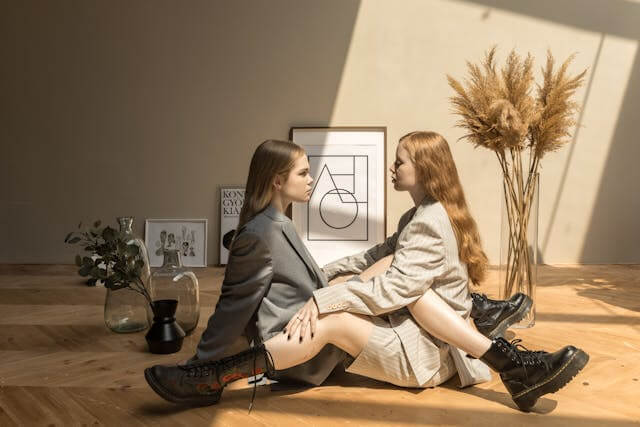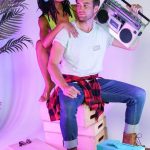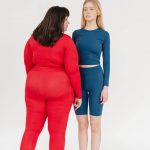Fashion is an ever-evolving form of self-expression that continues to inspire, empower, and fascinate individuals across the globe. From bold runway looks to subtle streetwear, fashion is a versatile medium that reflects not only personal style but also cultural shifts, societal values, and technological innovations. Today, more than ever, fashion isn’t just about wearing clothes—it’s about creating an identity, telling a story, and making a statement. In this blog post, we explore some of the latest trends, discuss the significance of timeless fashion staples, and dive into how fashion can serve as a tool for personal expression.
1. The Rise of Sustainable Fashion
One of the most significant shifts in recent years is the growing awareness around sustainability in fashion. With fast fashion brands dominating the market for years, the environmental and ethical impact of mass production has come under scrutiny. Consumers are becoming more mindful of their purchases, opting for eco-friendly materials and brands that prioritize ethical practices.
Sustainable fashion is no longer just a niche trend—it’s a movement. Many brands are adopting sustainable materials such as organic cotton, recycled polyester, and bamboo fabrics. Others are focusing on ethical labor practices, ensuring that workers are paid fair wages and provided with safe working conditions. Brands like Stella McCartney and Patagonia have become pioneers in this space, proving that sustainability and style can go hand-in-hand.
For the conscious fashionista, thrifting and upcycling old clothes are becoming increasingly popular. Vintage pieces not only add character to your wardrobe but also reduce waste and environmental impact. Fashion, it seems, is returning to a slower, more thoughtful pace.
2. Trendy vs. Timeless: Navigating Fast Fashion Trends
While trends come and go, certain fashion items stand the test of time. Navigating the balance between trendy and timeless pieces can be tricky, but it’s the key to building a versatile wardrobe that works year-round.
This year, we’ve seen some exciting trends take the spotlight. For example, oversized blazers, chunky loafers, and wide-leg trousers have made a major comeback, often giving a nod to ‘80s and ‘90s fashion. Y2K fashion—think mini skirts, bedazzled accessories, and pastel hues—has also seen a revival, especially among Gen Z influencers.
However, it’s important not to rely too heavily on fast fashion trends, which can quickly fade out of style. Building a wardrobe with a foundation of timeless staples ensures that you always have chic options to fall back on. Key pieces like a well-fitted trench coat, classic white sneakers, a little black dress, and a pair of tailored jeans are essential for any fashion enthusiast. These items can be dressed up or down, layered with trendier pieces, and worn season after season.
3. Fashion as Personal Expression
More than ever, fashion is seen as a tool for personal expression. It’s about making choices that reflect who you are, what you value, and how you want to be seen by the world. For some, fashion is about experimenting with new silhouettes, textures, and colors; for others, it’s about building a minimalist wardrobe that reflects a less-is-more philosophy.
Street style is one area where individuality thrives. Unlike the structured, polished looks on runways, street style is often spontaneous and represents a mix of high-end fashion, vintage finds, and personal flair. It’s here that we see the most innovative fashion—whether it’s a designer handbag paired with thrifted jeans or a DIY project turned into a wearable piece of art. Fashion is fluid and evolving, much like the people who wear it.
The rise of fashion influencers and social media platforms like Instagram and TikTok has also changed the game. Individuals can showcase their unique styles to millions of people, inspiring others to experiment and take risks in their fashion choices. The democratization of fashion means that style is no longer reserved for the elite—anyone with a strong sense of identity and creativity can leave a mark on the fashion world.
4. Fashion’s Role in Empowerment
Fashion has the power to empower people, allowing them to feel confident, bold, and unapologetically themselves. Clothing can affect how we feel, how we present ourselves, and how we’re perceived by others. There’s a reason why so many people rely on fashion to boost their mood—think of the last time you put on a killer outfit and felt ready to take on the world.
This sense of empowerment goes beyond looking good. Wearing clothes that make you feel strong and confident can also influence your mindset. For women, power dressing—suits, sharp blazers, and strong silhouettes—can be a way of commanding respect and asserting authority in a male-dominated space. For men, fashion is also evolving, with more options for expressing individuality, from playful prints to bold accessories.
As fashion becomes more inclusive, the empowerment extends to people of all shapes, sizes, genders, and backgrounds. Brands are finally recognizing the importance of catering to diverse bodies and perspectives, offering plus-size options, gender-neutral clothing, and designs that speak to a variety of cultural identities.
5. Conclusion: Finding Your Fashion Voice
Ultimately, fashion is a deeply personal journey, one that allows you to explore your identity, values, and creativity. Whether you’re someone who religiously follows the latest runway trends, or you prefer timeless classics, your style is unique to you. By finding the balance between sustainability, trendiness, and personal expression, you can cultivate a wardrobe that not only looks good but feels good too.
Fashion is an extension of who you are—so embrace it, experiment, and wear it with pride.




